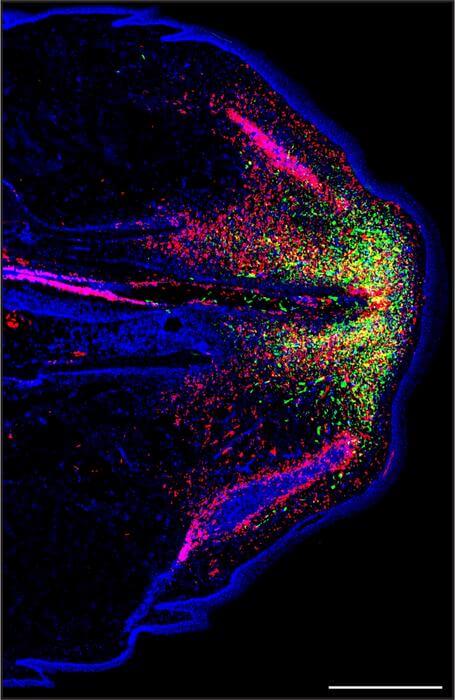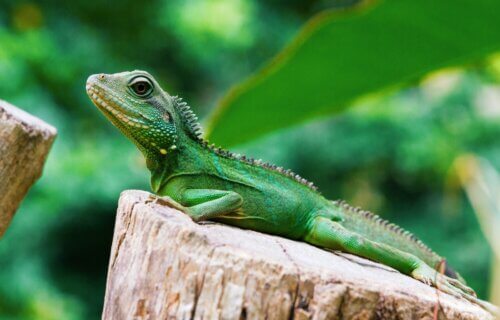LOS ANGELES — The mystery of how lizards regenerate their tails has been solved, and this discovery could lead to new treatments for arthritis in humans.
Lizards have the ability to shed their tails to escape predators, but the stump eventually grows back. Although the regenerated tail appears normal, the original bone is actually replaced by softer cartilage.
Now, researchers at the Keck School of Medicine at the University of Southern California (USC) have identified key cells involved in cartilage regeneration. They believe that their discovery could pave the way for rebuilding cartilage damaged by osteoarthritis, a crippling degenerative disease for which there is currently no cure.
The team has published the first detailed description of the interplay between two cell types that enable lizards to regenerate their tails in the journal Nature Communications.

Osteoarthritis affects 32.5 million adults in the United States alone. Meanwhile, lizards are among the only higher vertebrates capable of regenerating cartilage that does not harden, making them the closest relatives to mammals that can regenerate. In contrast, humans are unable to repair cartilage that has been damaged once they reach adulthood.
“Lizards are kind of magical in their ability to regenerate cartilage because they can regenerate large amounts of cartilage and it doesn’t transition to bone,” says the study’s corresponding author, Thomas Lozito, an assistant professor of orthopedic surgery and stem cell biology and regenerative medicine, in a media release.
“The dream is to find a way to translate that process in humans because they cannot repair cartilage,” Lozito continues. “This represents an important step because we need to understand the process in great detail before we can try to recreate it in mammals.”
The team determined that cells called fibroblasts, which help build tissue, are the critical cell type responsible for building cartilage. Their research found that changes in gene activity among certain fibroblast cells enabled cartilage building. Additionally, they discovered that a type of immune cell known as a septoclast plays an important role in inhibiting fibrosis or scarring, thereby allowing the process of regeneration to occur.
“Those two cell types working together laid the foundation for the beginning of the regenerative process,” Lozito says.
The researcher also notes that a major difference between humans and lizards is that our tissue tends to scar and scarring prevents tissue from regenerating.
Using what they discovered, the researchers were able to induce cartilage regeneration in the limbs of lizards, which do not regrow. They now hope to test whether they can induce cartilage building in mammals, beginning with mice, using the techniques they employed in their experiments on lizard limbs.
South West News Service writer Jim Leffman contributed to this report.
You might also be interested in:
- Futuristic handheld 3D bioprinter could revolutionize healthcare, regenerate organs
- Regenerate body parts? Salamander may hold secret to sci-fi superpower for humans
- United States of Pain: Where you live linked to arthritis severity, study reveals

